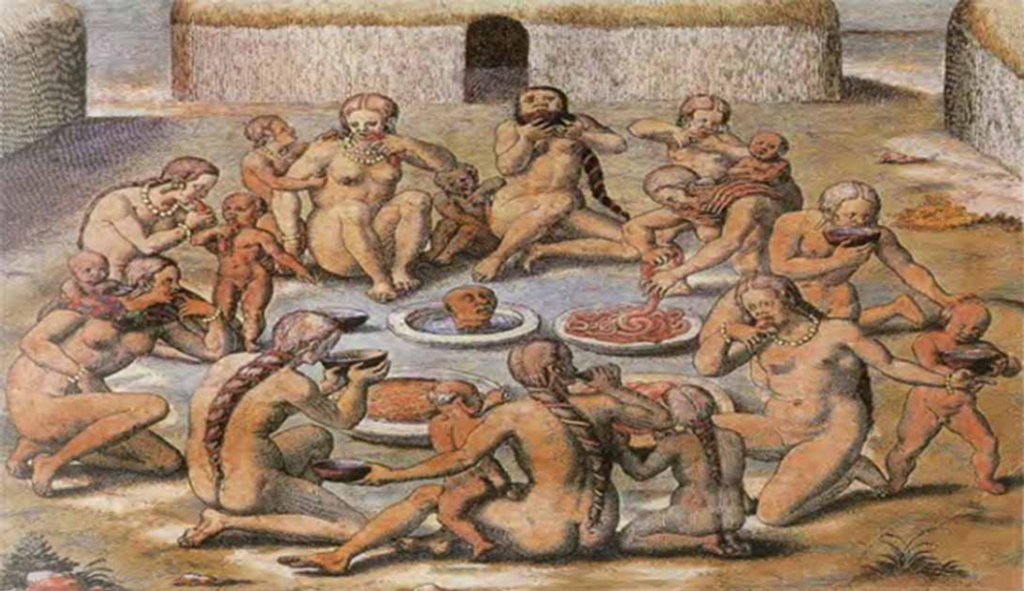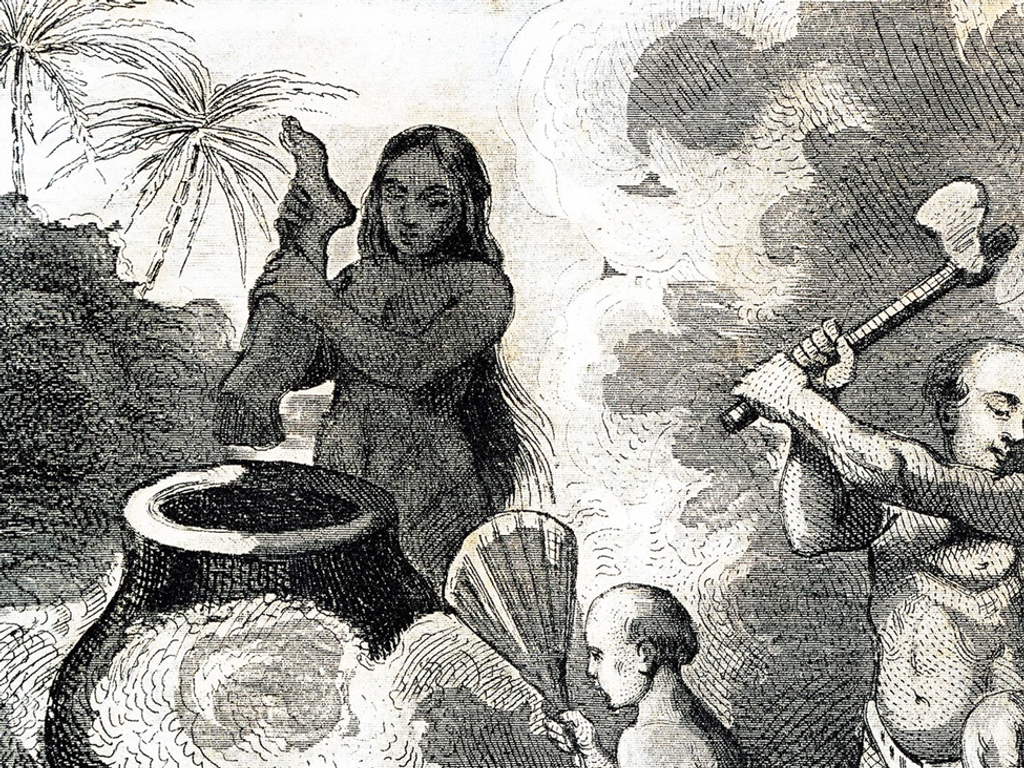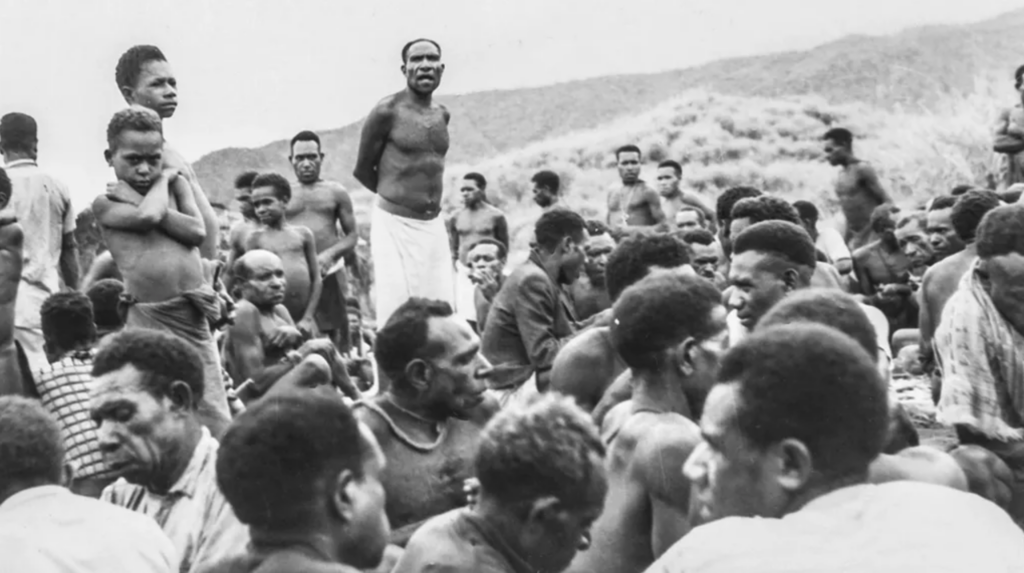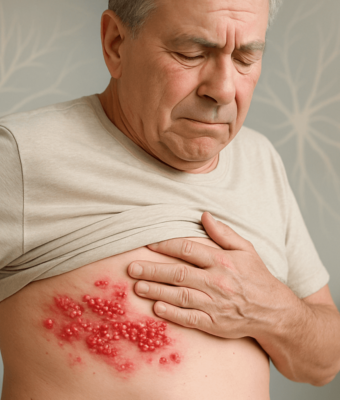In the remote highlands of Papua New Guinea, human existence remained a mystery to much of the world until the 1930s, when Australian gold prospectors, exploring the region, stumbled upon a startling revelation – a bustling population of nearly a million inhabitants. Fast-forward to the 1950s and researchers venturing into these secluded villages made a chilling discovery. Within the Fore tribe, comprising around 11,000 individuals, a sinister shadow loomed large—an inexplicable ailment known as Kuru. This disease, aptly named for the ‘shivering’ or ‘trembling’ it induced, was a mystery that would captivate the world. The culprit? Funeral practices. More specifically, the consumption of deceased bodies during funeral rites when people start eating people.
As symptoms manifested, victims faced a harrowing descent. Initially, a mere stumble foretold the loss of limb control, accompanied by a peculiar emotional unraveling that earned it the moniker of the “laughing death.” Within a year, the afflicted were rendered helpless, incapacitated on the ground, and robbed of basic bodily functions.
The tale of Kuru haunts us with its reminder of the mysteries that lurk within the human experience, beckoning us to delve deeper into the enigmatic realms of health and disease.
Many locals firmly believed in the supernatural, attributing the disease to sorcery. It struck primarily adult women and children under the age of 8, leaving some villages devoid of young women.

“They were gripped by a desperate urgency, aware of their dwindling numbers and the looming threat of extinction,” explains Shirley Lindenbaum, a medical anthropologist from the City University of New York.
The Cultural Practices Linked to the Spread of Kuru
But what lay at the heart of this perplexing affliction? The answer remained elusive, confounding researchers for years. Despite exhausting all avenues and ruling out various contaminants, the suspicion turned to genetics. In a pivotal move in 1961, Lindenbaum embarked on a journey across villages, meticulously charting family trees to unlock the truth.
However, Lindenbaum, who remains deeply immersed in studying the epidemic, dismissed the genetic explanation. She observed that the disease affected individuals within the same social circles but not necessarily within the same genetic lineage. Additionally, she noted a peculiar geographical pattern: it originated in northern villages around the turn of the century and gradually spread southward over the years.
Having an intuitive sense of the situation, Lindenbaum’s suspicions were eventually validated. The culprit? Funeral practices. More specifically, the consumption of deceased bodies during funeral rites.
In numerous villages, the tradition dictated that upon death, the deceased would undergo cooking and be consumed by the community. This act, steeped in love and sorrow, was seen as a final tribute to the departed.
As recounted by a medical researcher, in the Fore culture, the fate of a deceased body depended on whether it was buried or left on a platform. If buried, it would be consumed by worms, while if placed on a platform, it would be devoured by maggots. The Fore community believed it preferable for the body to be consumed by loved ones rather than insects and worms.

Women played a crucial role in these funeral rituals. They would delicately extract the brain, mix it with ferns, and cook it inside bamboo tubes. Every part of the body, except the gall bladder, was fire-roasted and consumed. Lindenbaum highlights that it was primarily adult women who undertook this task because they were believed to possess the ability to contain and manage the potentially harmful spirit accompanying the deceased.
In Lindenbaum’s words, “Thus, the women assumed the responsibility of ingesting the deceased body, providing it with a sanctuary within their bodies – essentially, taming it during this perilous phase of mortuary customs.”
Occasionally, women would share portions of the funeral feast with children, which Lindenbaum described as “snacks.” According to her, the children consumed what their mothers offered them until they reached a certain age and transitioned to living with the men. At that point, they were strictly instructed to avoid partaking in the ritualistic consumption.
Scientific Breakthrough and Understanding of Prions
Following persistent urging from researchers like Lindenbaum, biologists eventually embraced the notion that the mysterious disease stemmed from the practice of consuming deceased individuals. The investigation reached its conclusion when a team at the U.S. National Institutes of Health injected infected human brain tissue into chimpanzees. Subsequently, the animals displayed symptoms of Kuru several months later. Recognizing the groundbreaking discovery, the group was awarded a Nobel Prize, branding the affliction as a “slow virus.”
However, contrary to expectations, the culprit wasn’t a conventional pathogen like a virus, bacterium, fungus, or parasite. Instead, it turned out to be an entirely novel infectious agent. This enigmatic entity lacked genetic material, possessed the remarkable ability to withstand boiling temperatures, and defied conventional notions of life.
As subsequent investigations revealed, it was a peculiar protein—a prion—that wreaked havoc. This twisted protein, like a master manipulator, executed a microscopic equivalent of a Jedi mind trick, coercing normal proteins on the surface of nerve cells in the brain to adopt its aberrant structure. These malevolent agents, termed ‘prions’ or ‘proteinaceous infectious particles,’ gradually misfolded numerous proteins, forming lesions in the cerebellum akin to a sponge. This relentless process ultimately led to the demise of nerve cells, underlining the severity of the impact.
Disclaimer Statement: This information is from a third-party health news channel. The opinions expressed here belong to the respective authors/entities and do not reflect the views of Docquity. Docquity does not assure, endorse, or vouch for any of the content and bears no responsibility for it in any way. It is essential to take all necessary steps to ensure the information and content provided are accurate, current, and verified. Docquity disclaims any express or implied warranties related to the report and its contents.
References
When People Ate People, A Strange Disease Emerged [Internet]. Accessed on May 14, 2024. Available at: https://www.npr.org/sections/thesalt/2016/09/06/482952588/when-people-ate-people-a-strange-disease-emerged
About Docquity
If you need more confidence and insights to boost careers in healthcare, expanding the network to other healthcare professionals to practice peer-to-peer learning might be the answer. One way to do it is by joining a social platform for healthcare professionals, such as Docquity.
Docquity is an AI-based state-of-the-art private & secure continual learning network of verified doctors, bringing you real-time knowledge from thousands of doctors worldwide. Today, Docquity has over 400,000 doctors spread across six countries in Asia. Meet experts and trusted peers across Asia where you can safely discuss clinical cases, get up-to-date insights from webinars and research journals, and earn CME/CPD credits through certified courses from Docquity Academy. All with the ease of a mobile app available on Android & iOS platforms!






